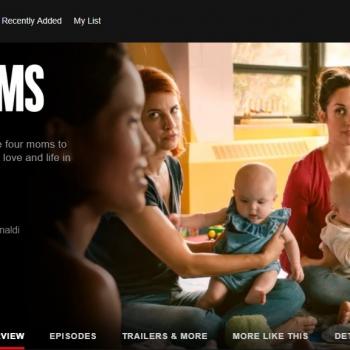This is a guest post by Athena Carson, a member of the Catholic Working Mother’s Facebook group. You can read Part 1 of this post here.
In part 1, we introduced Joy Pullman’s article at the Federalist complaining about the CRADLE Act and discussed the big picture demographic issues involved. In sum, Ms. Pullman is simultaneously 1) complaining about lower fertility and 2) opposed to a simple proposal to relieve some of the pressures causing lower fertility.
But then she continues by listing reasons why she doesn’t like the CRADLE Act that have nothing to do with either her overall thesis (as stated herself in the opening of the piece) or, frankly, reality.
I sorted her twelve objections into the few basic themes:
Proper role of government (objections 2, 3, 4, and 12)
Ms. Pullman says that the CRADLE Act:
2. Ignores how government fuels this problem
This is like saying you are ignoring the forest fires in Alaska when you put out your own campfire in Oklahoma. In other words, the CRADLE Act is not intended to address this issue.
Addressing this problem would require either: a) going back in time; or b) completely overhauling our federal budget. I’m honestly not sure which one would be more difficult.
Either way, this objection is a non sequitur.
3. Another spend now, pay later boondoggle
Ms. Pullman’s point here is that with a declining workforce, it’s likely that there will be no Social Security in a few decades. She may be right about that – it’s been a while since I looked at those projections in detail. Social security’s stability depends on a growing population of workers, which in turn depends on a stable or growing fertility rate. We’re not there right now (remember part 1?), and the models predicting the demise of Social Security are based on our present low and declining fertility rate.
But here’s the thing – if you can increase the workforce, suddenly those models don’t work anymore. Suddenly, Social Security is a sustainable, revenue-neutral or revenue-positive program. Guess how you encourage a larger workforce? By relieving some of the burdens on families who are otherwise open to having more children.
Not to mention, Social Security is not the whole federal budget. If we decide (as I think we should) that investing in a more family-friendly society is a priority, there are many other places to look for funding. (This infographic shows straight spending, but this report from the Social Security Administration shows program-related income and spending, as well as a lot of words for your reading pleasure.)
4. Transfers responsibility from families to taxpayers
As mentioned above, the program is revenue neutral in the long run, using a benefit structure already in place. There is no transfer related to this program.
12. Uses right-branded politician to endorse unlimited government
A program that is revenue neutral in the long run, makes a small tweak to a benefit structure already in place, and is opted in at the election of the individual – that is unlimited government?! I think she should have a chat with someone who immigrated from China, Cuba, or literally any Communist country if she wants to understand what “unlimited government looks like.”
Assumptions of gender roles (objections 5 and 6)
In this bucket, we have:
5. Erode fathers’ commitment to their own kids
… How so? The proposal itself is gender neutral. I can think of no better way to do the opposite of what Ms. Pullman is afraid of than to give men the opportunity to stay home for a few months to bond with their newborns.
6. Attach mothers to the workforce instead of their children
Again – How? By allowing women to stay home longer than they would have otherwise? By allowing children that valuable bonding time as newborns?
She doesn’t even really make a point here. Within these few paragraphs, she says,
“Paid parental leave appears to increase job retention among working women who have kids.” (She is quoting a study and says this outcome is a bad thing.)
“Look, I’ve been a working mother all throughout having our currently five kids. I am not against mothers working by any means.”
“Acting in line with this attitude is yet another method of artificially inflating today’s GDP at the expense of the nation’s long-term health.”
“We provide the berth for motherhood by having a genuinely strong economy with rising wages for the babymaker who doesn’t give birth.”
So basically – empowering women to keep their careers (if they choose) is a bad thing, women working isn’t actually real productivity, men’s productivity is the only productivity that really counts and men need artificially high compensation, but she’s “not against mothers working by any means.”
Are you confused? Because I sure am. Go look at the piece yourself – she really does say all these things in succession.
Like it or not, paid work outside the home is the economic necessity for the vast majority of adults. Paid leave doesn’t alter this reality, but it does make this reality a bit more doable.
Trade-offs (objections 9 and 10)
9. Paid leave is not what working mothers really want.
Well, yes. Because women are rational agents (contrary to popular anti-feminist thought) and can obviously see that: 1) paid leave is a benefit that makes a few months of their lives better; whereas 2) more affordable childcare and more flexible work opportunities is a benefit that makes YEARS of their lives better. Months vs. years …. Gosh, that’s a tough one.
But that doesn’t mean that paid leave is something they would turn down!
Also, there’s another consideration: what can the government realistically do effectively?
The government is not magic. It is bureaucratic, it is unwieldly, it is difficult. As such, a wise person only trusts the government to handle programs that are simple, nonjudgmental, easy to execute, and overall idiot-proof. The CRADLE Act fits that bill.
Let’s say that we agreed we wanted policies that would give women affordable childcare and more flexible work opportunities … how would you even do that? We already know that Ms. Pullman is not in favor of more daycare, but apparently she’s also not in favor of a simple program that would enable families to use less daycare in the early months. And she’s not in favor providing a thing that working mothers need because working mothers happen to also need something else? Got it.
How about flexible work opportunities – how would you even craft a government program for that? Better to let the individual companies work it out for themselves when responding to the pressures of the labor market. Like they are now.
10. Paid leave hurts women’s careers
Ahem. As I mentioned above, the proposal itself is gender-neutral. So what she’s really afraid of is paid leave hurting parents’ careers, because men are parents, too. And here’s some good news on that front! Anecdotally, my former employer recently introduced a policy of 16 weeks of gender neutral paid parental leave. After this policy was introduced, all of the men that I worked with whose wives were expecting made sure they took several weeks off after the birth. They came back positively ecstatic to have been able to spend that time with their babies.
But yes, extended time away from work will hurt one’s career because there’s a thing called trade-offs. Trade-offs that human beings make when they sort out their priorities, simply because they can’t do everything all at the same time. I don’t dispute that. What I do dispute is the idea that the fact that this trade-off exists is evidence that families shouldn’t even be allowed this option.
Wait a minute …. *scrolls up* … Ms. Pullman literally just talked in point 6 about how women working is bad. So why is she suddenly concerned about women’s careers? Was she running out of ideas at this point and just looking to fill out a list of 12?
What’s good for families (objections 1, 7, 8, 11)
1. Welfare programs incentivize family disintegration
Well, good thing we’re not talking about welfare! We’re talking about the option to present-value a portion of an existing benefit.
Next!
7. Three months is nowhere near enough / 8. Mother absence increases child depression, illness, misbehavior, and later crime
So zero months is better somehow? Ms. Pullman just said that mothers with paid leave “take longer leaves than they otherwise would.” Talk about letting the perfect be the enemy of the good. But if you want to talk about “enough” time, we can totally turn into Bulgaria, where the parents get 59 weeks off.
What world is she living in where women could or should stay home en masse? Anyway, that’s a much longer discussion than I want to have right now.
11. Incentivizes employers to jettison private paid leave.
What companies out there have private paid leave that they could get rid of? The whole reason we are having this conversation is that private leave either: a) doesn’t exist; or b) is far less than the three months this plan is proposing.
Sure, there are some generous companies out there, like my former employer with 16 weeks paid leave. Maybe they will cut it down to 3 months and outsource to Social Security – who knows. But the future state where everyone gets three months is better for society as a whole than the present state where some parents get a lot of leave but many parents get zero leave.
In closing, Ms. Pullman’s objections to the CRADLE Act are either nonsensical or unsupportable, based on the world as she wishes it were, rather than the world as it actually is.













